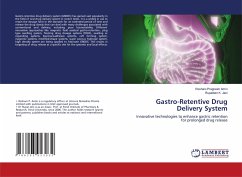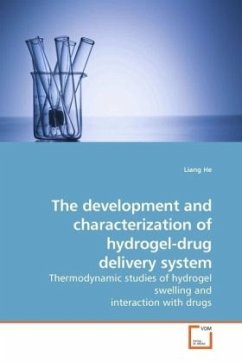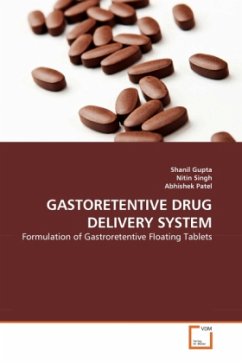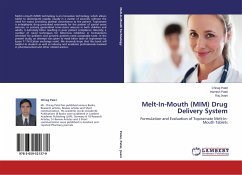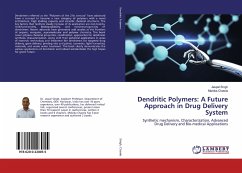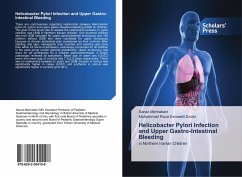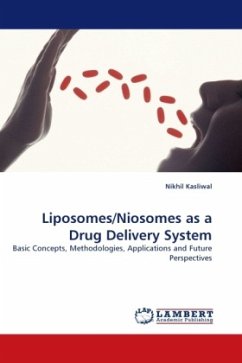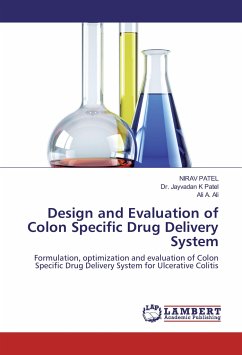
DEVELOPMENT OF GASTRO-RETENTIVE DRUG DELIVERY SYSTEM
A SCIENTIFIC APPROACH TO OVERCOME CHALLENGES IN GASTRO-RETENTIVE DRUG DELIVERY SYSTEM
Versandkostenfrei!
Versandfertig in 6-10 Tagen
39,99 €
inkl. MwSt.

PAYBACK Punkte
20 °P sammeln!
There are several reasons for the attractiveness of modified release dosage forms. For many disease states, a number of therapeutically effective compounds already exist. The goal in designing sustained or controlled delivery systems is to reduce the frequency of dosing and/or to increase the effectiveness of the drug by localization at the site of action, reducing the dose required or providing the uniform drug delivery. These systems have the obvious advantages of ease of administration and patient acceptance. Because of flexibility of dosage form design and their testing, oral sustained rel...
There are several reasons for the attractiveness of modified release dosage forms. For many disease states, a number of therapeutically effective compounds already exist. The goal in designing sustained or controlled delivery systems is to reduce the frequency of dosing and/or to increase the effectiveness of the drug by localization at the site of action, reducing the dose required or providing the uniform drug delivery. These systems have the obvious advantages of ease of administration and patient acceptance. Because of flexibility of dosage form design and their testing, oral sustained release systems have received a great deal of attention. The cost of formulation development, raw materials and manufacturing are significant factors in choosing formulation techniques and materials. The objective of this book is to discuss in a qualitative sense some of the advantages and challenges of Gastroretentive Drug Delivery Systems in comparison to controlled release formulations and to consider some contentious issues regarding the feasibility for Gastroretentive Drug Delivery systems for certain drugs. Attention will focus primarily on Oral Controlled RDDS.



